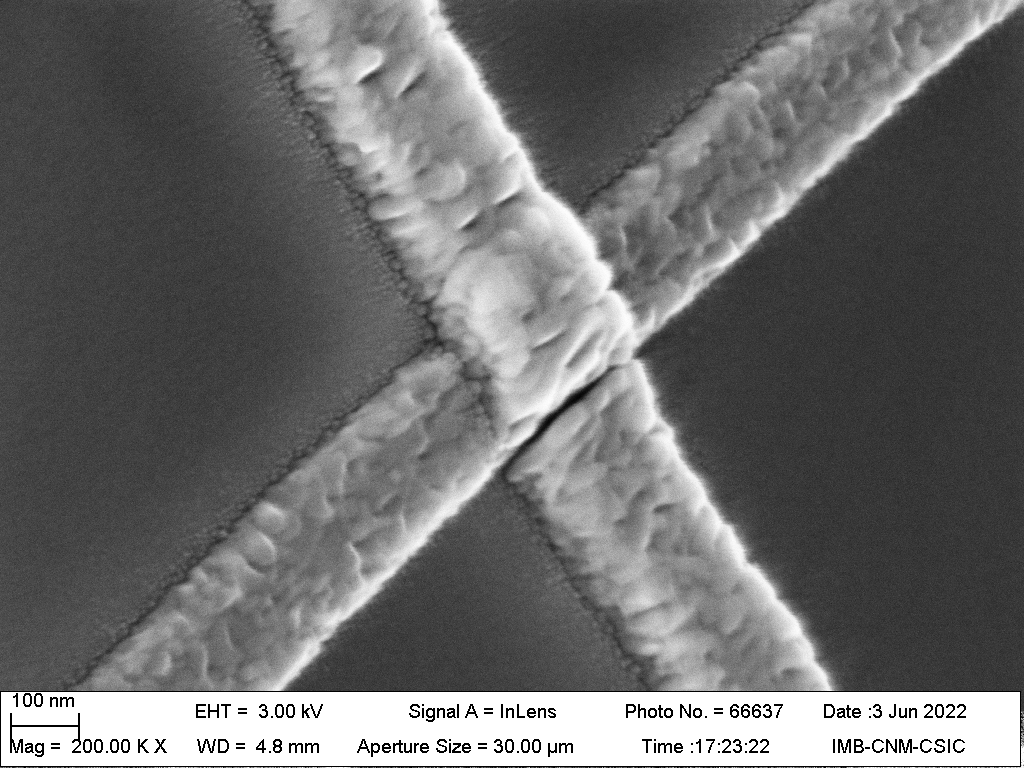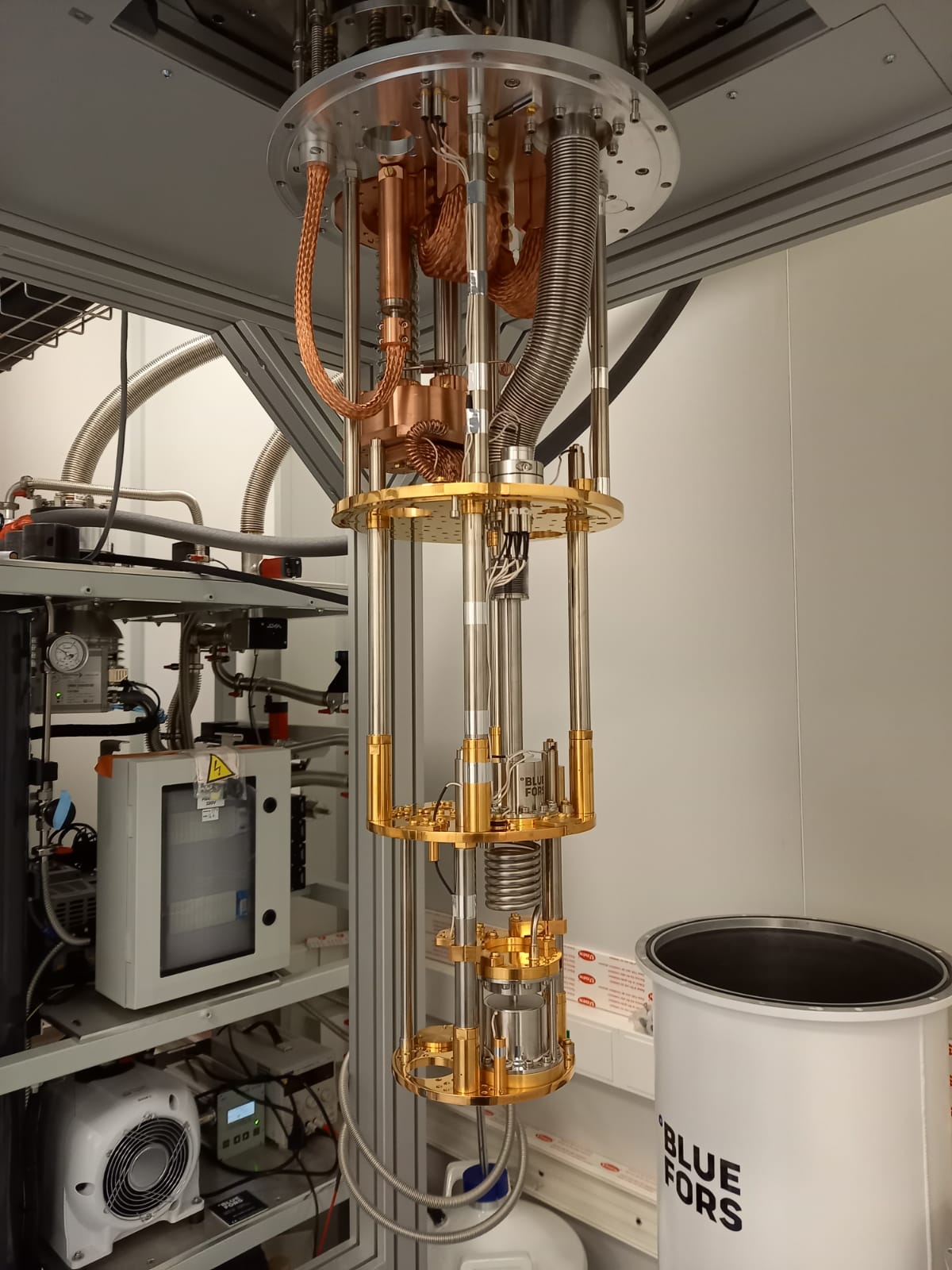Research
We build quantum processors out of superconducting quantum circuits. Superconducting qubits are constructed using Josephson junctions, which are nonlinear, nondissipative elements that generate an anharmonic spectrum of the circuit. The Josephson tunnel junction is a very thin superconductor-insulator-superconductor barrier that permits tunneling of the superconducting wave function across it (see an SEM image below). In engineering language, it behaves as a nonlinear inductor. Superconducting flux qubits consist of a ring interrupted by 4 Josephson junctions. The circuit is made out of aluminum.
Superconducting qubits are obtained out of two of the states of the Josephson circuit nonlinear spectrum. There exist different types of superconducting qubits depending on whether the Josephson energy stored in the junction dominates over the capacitive energy. The most widely used qubits are the persistent current flux qubit and the Cooper pair box transmon qubit.
Superconducting qubits coupled to resonators are the on-chip analogue of single atoms coupled to single photons in a cavity, in the microwave regime of energies. In atom-photon cavity QED, the highest couplings achieved are 10-6 times smaller than the cavity frequency, while superconducting qubits can easily attain 10-1, entering the regime of ultrastrong couplings where unexplored physics take place.



